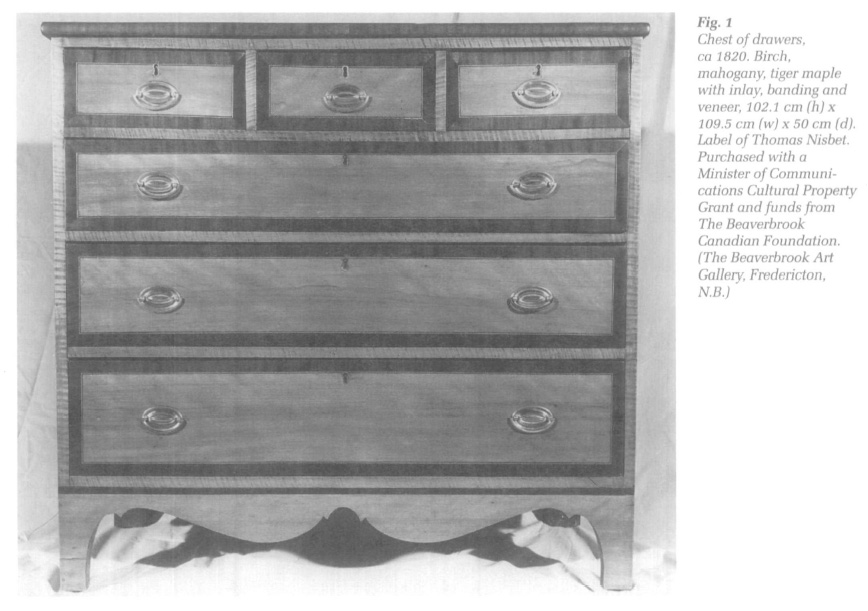Notes and Comments / Nouvelles brèves
Research Query: Saint John River Furniture
1 Over the years a number of publications have appeared on the subject of New Brunswick furniture, most notably those of Huia Ryder and Donald Webster. In addition, a doctoral study on the furniture brought into and made in the Saint John River area is currently under way. The vernacular and high-style furnishings from communities along the river are being investigated, especially from the Madawaska Settlement area, Fredericton and environs, and the city of Saint John itself. The furnishings are from the pre-1850 period and reflect the cultural heritage of the valley (Fig. 1). Cabinetmakers with Scottish, English, Acadian, Québécois, and North American heritages (for example, Thomas Nisbet, Alexander Lawrence, Alexander Mitchell and Honoré Pelletier) are of particular interest. Furniture is being investigated from an ethno-cultural perspective for traditions in construction techniques and design that reflect the different manufacturing practices associated with diverse ethnic groups. It is proposed that a layering of cultures in the valley is evidenced in the material artifacts of the region. For example, some chairs with through-tenoned joints are indicative of Irish and Acadian traditions, while woven leather (babiche) seats reflect the snowshoe-making traditions of the First Peoples. This "tier theory" supports the idea of a multicultural heritage in the decorative arts, as group interaction is evidenced in the furnishings of the period.
 Display large image of Figure 1
Display large image of Figure 12 Examples of furniture are being investigated at Kings Landing Historical Settlement, The Beaverbrook Art Gallery, The Ross Memorial Museum, the York-Sunbury Museum, New Brunswick Museum, Village Historique Acadien, Sheriff-Andrews House, Nova Scotia Museum, Royal Ontario Museum, Canadian Museums of Civilization (Hull and Quebec City), Maine State Museum, Victoria and Albert Museum and the Edinburgh National Museum. Fine artworks such as paintings, drawings, and prints are being looked at for evidence of cultural group interaction and decoration of interiors, particularly from collections of The Beaverbrook Art Gallery and the National Gallery of Canada. Cartographic sources in the National Archives, New Brunswick Museum, and Dalhousie Archives are being looked at for place nomenclature and decorative embellishment. Historical documents are being looked at in provincial and national archives as well as university rare-book rooms.
3 As a new resident in Canada and relatively unfamiliarwith Canadian museums, Jenny Cook would appreciate any suggestions of alternative public sources for study. She is particularly interested in viewing private collections. Any comments on the thesis topic would be gratefully received. Please contact Jenny Cook, c/o Michael Cross, History Department, Dalhousie University, Halifax N.S. B3H3J5; or Kings Landing Historical Settlement, P. O. Box 522, Fredericton, N.B. E3B 5A6.